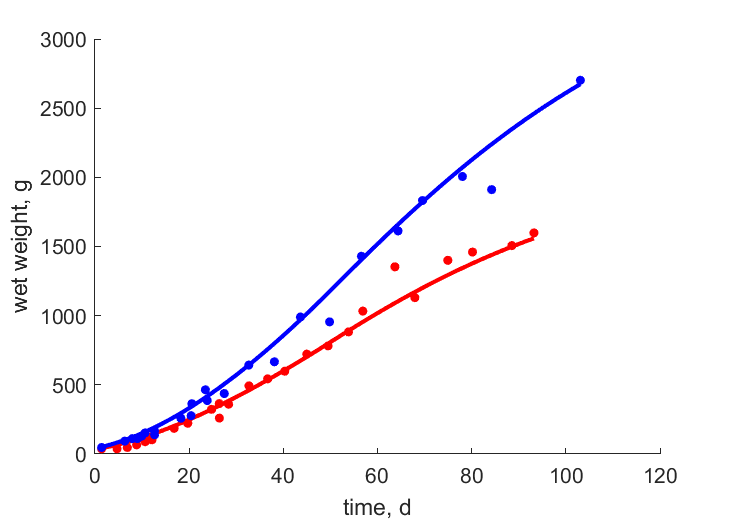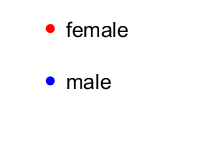Predictions & Data for this entry
| Model: std | climate: Dfa, Dfb | migrate: | phylum: |
| COMPLETE = 2.5 | ecozone: THp | food: bxCi, biHs | class: |
| MRE = 0.059 | habitat: 0iTf | gender: Dg | order: |
| SMSE = 0.010 | embryo: Tnsf | reprod: O | family: |
Zero-variate data
| Data | Observed | Predicted | (RE) | Unit | Description | Reference |
|---|---|---|---|---|---|---|
| ab | 25 | 19.75 | (0.2102) | d | age at birth | avibase |
| tx | 7 | 7.001 | (0.0001115) | d | time since birth at fledging | guess |
| tp | 76.25 | 76.14 | (0.001435) | d | time since birth at puberty | guess |
| tR | 912.5 | 912.5 | ( 0) | d | time since birth at 1st brood | avibase |
| am | 6570 | 6570 | (5.116e-06) | d | life span | AnAge |
| Wwb | 37 | 39.68 | (0.07257) | g | wet weight at birth | MiloLind1989 |
| Wwi | 1985 | 2155 | (0.0858) | g | ultimate wet weight | avibase |
| Wwim | 4240 | 3784 | (0.1075) | g | ultimate wet weight for male | avibase |
| Ri | 0.02192 | 0.02189 | (0.001158) | #/d | maximum reprod rate | ADW |
Uni- and bivariate data
| Data | Figure | Independent variable | Dependent variable | (RE) | Reference |
|---|---|---|---|---|---|
| tW_f |   | time | wet weight | (0.06839) | MiloLind1989 |
| tW_m |   | time | wet weight | (0.07292) | MiloLind1989 |
Pseudo-data at Tref = 20°C
| Data | Generalised animal | Tetrao urogallus | Unit | Description |
|---|---|---|---|---|
| v | 0.02 | 0.04944 | cm/d | energy conductance |
| p_M | 18 | 920.3 | J/d.cm^3 | vol-spec som maint |
| k_J | 0.002 | 0.03769 | 1/d | maturity maint rate coefficient |
| k | 0.3 | 0.3 | - | maintenance ratio |
| kap | 0.8 | 0.9787 | - | allocation fraction to soma |
| kap_G | 0.8 | 0.7998 | - | growth efficiency |
| kap_R | 0.95 | 0.95 | - | reproduction efficiency |
Discussion
- Males are assumed to differ from females by {p_Am} only
- Food intake is reduced just after hatch
- mod_1: males have equal state variables at b, compared to females
Bibliography